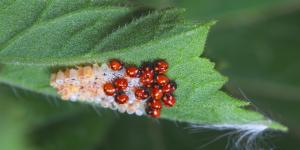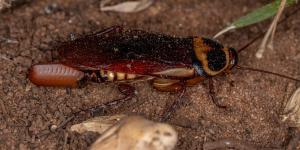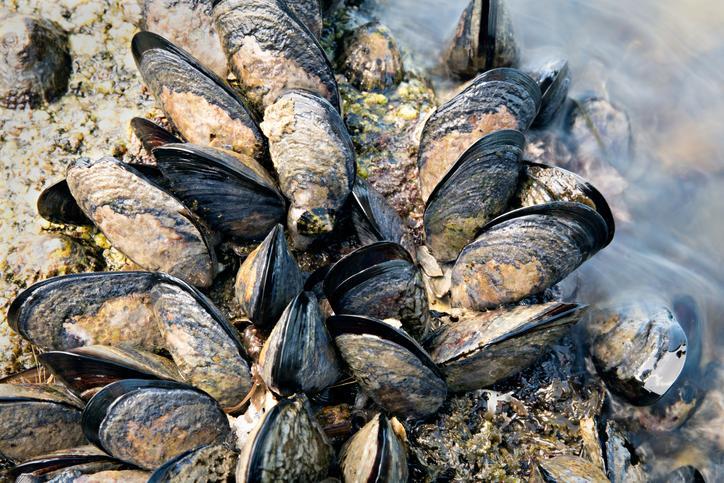How Do Mollusks Reproduce?

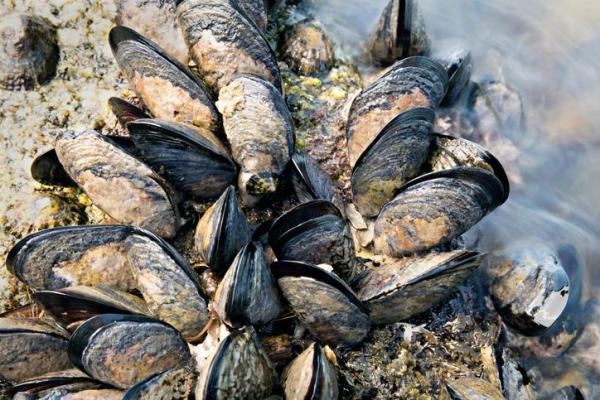
How a mollusk reproduces varies greatly since there are many different types of mollusks in nature. Their reproductive strategies depend on various factors, including their individual morphology, environment, climate and many others. Despite such variety in how mollusks reproduce, almost all do so through sexual reproduction. This is the case for bivalve mollusks, gastropod mollusks and others.
At AnimalWised, we look at mollusk reproduction in more detail by asking how do mollusks reproduce? To do so, we need to explain a little about the different types of mollusks and how their specific characteristics allow them to reproduce. We illustrate this by providing different examples of mollusk reproduction in nature.
What are mollusks?
Mollusks are from the phylum Mollusca, a very large phylum of invertebrate animals. It is almost as numerous as arthropods. There is a great variety of mollusks, but there are few specific similarities. One of the most significant is the presence of a mantle, a dorsal body wall which protects vulnerable organs. In terms of differences, they all have their own adaptations which have allowed their species to survive.
Some of the characteristics of mollusks include those related to the division of their body:
- Cephalic zone: where the sensory organs are concentrated next to the brain. This is the ‘head’ of the mollusk which usually contains the venom glands in venomous mollusk species. Some of the most venomous animals in the world are mollusks.
- Foot: they have a very muscular locomotor foot whish is used to crawl. This foot is modified in some groups, such as that of the cephalopods. Their foot has evolved into tentacles which are more useful underwater.
- Mantle: common to all mollusks, this is the dorsal surface of the body which secretes the shell or spicules, where applicable.
- Mantle cavity: in the posterior zone we find the paleal cavity where the olfactory organs, the gills (in those mollusks of aquatic life) and bodily orifices such as the anus are located. It is protected by the mantle, even if they do not have a shell.
Within the types of mollusks, there are some lesser-known classes, such as the classes Caudofoveata or Solenogastrea. These mollusks are characterized by being worm-shaped with a body protected by spicules.
Some mollusks present a very primitive morphology, as is the case of the mollusks belonging to the classes Monoplacophora and Polyplacophora. These animals have a muscular foot like that of snails which is protected by a single shell or several shells, respectively. The former resemble a clam with a single shell and the latter resemble a well-known arthropod, the woodlouse.
Other mollusks include the tusk shell. As their name suggests, their entire body is protected by a shell in the shape of an elephant's tusk. They belong to the class Scaphopoda and all are types of marine animals. Learn more with our guide to different types of terrestrial and aquatic snails.
We have yet to mention the most well-known types of mollusks. They are the following:
- Bivalves: such as clams, oysters or mussels.
- Gastropods: commonly known as snails and slugs.
- Cephalopods: include octopuses, cuttlefish, squid and nautiluses.
Some may not even be aware that squid and snails are both different types of mollusks, such is their difference in morphological traits. It is often these morphological characteristics which determine how each type of mollusk reproduces.
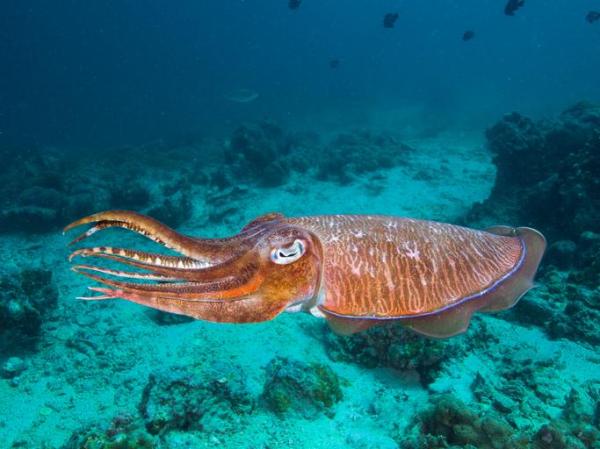
How mollusks reproduce
As we have seen, mollusks are an extremely heterogeneous group of animals. They can be terrestrial, aquatic or a mixture of both. This means they live in very different habitats and need to adapt to living in conditions which would be impossible for animals without their specific adaptations. The reproductive strategies with which they have evolved are equally diverse.
Mollusks mainly reproduce through sexual reproduction. Within most of each species there are unisexed individuals, i.e. female mollusks and male mollusks. However, some species are hermaphrodites, although most cannot self-fertilize since they need the presence of another individual. In the case of certain mollusk species, it is possible to reproduce via parthenogenesis, i.e. only requiring one individual of a species. This occurs in the New Zealand mud snail[1].
The vast majority of mollusk species are aquatic. In this habitat, the main type of fertilization is external. Only some species have internal fertilization, as is the case with cephalopods. For aquatic mollusks that do carry out external fertilization, both females and males release their gametes into the environment. These fertilize, develop, hatch and live as free larvae until the adult stage. In some species , these are practically sessile, crawlers or free swimmers.
Land mollusks include lung-shaped gastropods or land snails and have a more developed reproductive system. Each individual usually presents both sexes (i.e. they are hermaphrodites), but can only act as one at the time of copulation. The male introduces the sperm through the penis into the female where the eggs will be fertilized. The female will then lay fertilized eggs buried in the ground where they will develop into their young stages.
Examples of mollusk reproduction in nature
The number of different species of mollusks makes it difficult to provide examples of every type of mollusk reproduction. For this reason, we answer some of the most frequently asked questions about mollusk reproduction:
How do gastropod mollusks reproduce?
As we said before, even within the group known as snails and slugs there are different types of reproduction. However, we can use the common garden snail (Helix aspersa) as an example.
When two garden snails reach the adult stage they will be ready to carry out snail reproduction. Before copulation, both snails court each other. This courtship consists of a series of circular movements, rubbing and hormonal release that can last up to 12 hours. Hormones are released in their slimy mucus trail which the other snail can follow.
When the snails are very close, they throw what is known as a ‘love dart’ at each other. Also known as a gypsobelum, these structures are true hormone-impregnated chitinous darts that pierce the snail's skin and promote reproductive success. After the dart, one of the snails sticks out its penis through its genital pore and comes into contact with the partner's pore. They do so to deposit their sperm.
After a few days, the fertilized animal will introduce its cephalic area into the humid earth and deposit its eggs in a small nest. After a while, a hundred miniature snails will emerge from it.
Learn more about snails with our article on what food snails eat.

How do bivalve mollusks reproduce?
Generally speaking, the reproduction of bivalves occurs when the warm season arrives and the oceanic waters exceed 24 ºC/75 ºF. We can use various species of oyster as an example of bivalve mollusk reproduction. Oysters release pheromones into the water that shows their reproductive status and attracts a mate. When this occurs, both male and female oysters release millions of gametes that will fertilize outside their bodies.
The development of the eggs is dizzyingly fast, with oysters entering the larval stage within just a few hours. A couple of weeks later, they drop to a stony bottom, usually guided by chemical signals from other adult oysters. They are attached to the substrate by means of a cement that they create themselves and there they will spend the rest of their lives.
Not all bivalves have shells, but most do. Find out some of the most common types of seashells.
How do cephalopods reproduce?
Unlike many other types of mollusk, cephalopods almost exclusively show gonochorism, i.e. they have only two sexces, either male or female[2]. They release hormones through an optic gland which allows them to mature and create gametes. Courtship usually occurs elaborate dances during which the octopuses change color to attract their mate.
Copulation requires the transfer of a spermatophore from the male into the female. This is often done with a modified arm known as hectocotylus which acts as a penis. When the eggs are fertilized, they are laid by the female in clusters. This is usually somewhere protective, like hard structures on the ocean floor. When the eggs hatch, the larvae can swim, although most will die soon after birth.
Learn more about cephalopod reproduction with our article on how octopuses reproduce.
If you want to read similar articles to How Do Mollusks Reproduce?, we recommend you visit our Facts about the animal kingdom category.
1. Lively C. M. (1992). PARTHENOGENESIS IN A FRESHWATER SNAIL: REPRODUCTIVE ASSURANCE VERSUS PARASITIC RELEASE. Evolution; international journal of organic evolution, 46(4), 907–913. https://doi.org/10.1111/j.1558-5646.1992.tb00608.x
2. Murata, R., Mushirobira, Y., Fujita, T., & Soyano, K. (2019). Gonadal sex differentiation and development during early ontogenesis in the breeding kisslip cuttlefish (Sepia lycidas). Heliyon, 5(6), e01948. https://doi.org/10.1016/j.heliyon.2019.e01948
- Baltazar, P., Bermúdez, P., & Rivera, W. (1999). Cultivo de la ostra Crassostrea gigas (Thunberg, 1875) en un vivero artesanal, La Arena, Casma. Rev Per Biol, 6, 123-130.
- Reyes, C. A. O. (2005). Caracterización de algunos aspectos biológicos básicos del caracol de tierra Helix aspersa (Mollusca, Gastropoda, Stylommatophora) en la IV región de Chile. I. Parámetros reproductivos. Biociências (On-line), 13(2).
- Vélez, A. N. I. B. A. L., Elizabeth, A., & Freites, L. (1993). Inducción de la reproducción en la viera Euvola (Pecten) ziczac (Mollusca: Bivalvia) maduración y desove. Caribbean Journal of Science, 29(2), 209-213.



